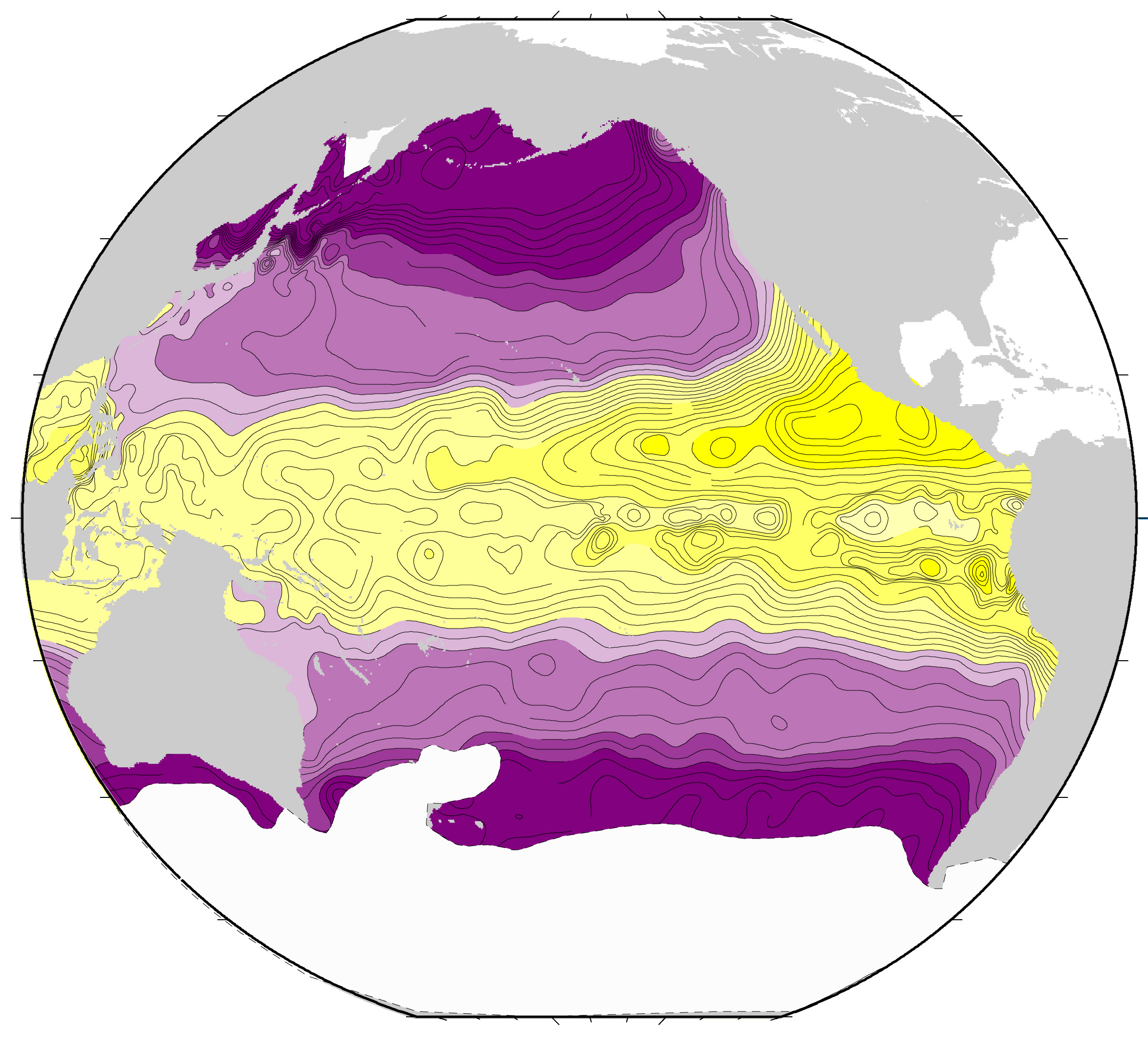
Meridional sections of salinity
Atlantic (25W)
Pacific (150W)
Indian (95E)
Meridional sections of potential density
Atlantic (25W) potential density relative to 0 dbar.
Atlantic (25W) potential density relative to 4000 dbar.
Atlantic (25W) neutral density (Jackett and McDougall gamma-n)
Pacific (150W) potential density relative to 0 dbar
Pacific (150W) potential density relative to 4000 dbar
Pacific (150W) neutral density (Jackett and McDougall gamma-n)
Indian (95E) potential density relative to 0, 1000, 2000, 3000, 4000 dbar (click on sections).
Indian (95E) neutral density (Jackett and McDougall gamma-n) (Click on section)
Property-property relations (O2/NO3, O2/PO4, NO3/PO4, O2/SiO4)
(umol/kg)
Pacific - all data from WOCE P16 (150W)
Atlantic - all data from WOCE A16 (25W)
Indian - all data from WOCE I8/I9(95E)
Oxygen and nutrient distributions
Atlantic and Indian oxygen - sea surface
Atlantic and Indian silica - sea surface
Atlantic and Indian nitrate - sea surface
Atlantic and Indian phosphate - sea surface
Pacific oxygen - sea surface
Pacific silica - sea surface
Pacific nitrate - sea surface
Pacific phosphate - sea surface
Meridional sections
Atlantic (25W) Oxygen (umol/kg)
Atlantic (25W) Silica (umol/kg)
Atlantic (25W) Nitrate (umol/kg)
Atlantic (25W) Phosphate (umol/kg)
Pacific Ocean sections along 150W Click on oxygen, silica, nitrate in particular.
Indian Ocean sections along 95E (WOCE) (Click on oxygen, silica, nitrate in particular)
Indian Ocean sections along 60E (WOCE) (Click on oxygen, silica, nitrate in particular)
Very old sections (1970s):
Indian (60E - Geosecs western ) Oxygen (umol/kg)
Indian (60E - Geosecs western) Silica (umol/kg)
Indian (60E - Geosecs western) Nitrate (umol/kg)
Indian (60E - Geosecs western) Phosphate (umol/kg)